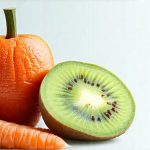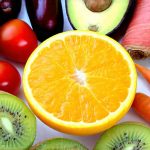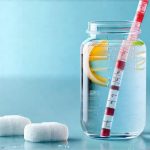Vomiting is rarely pleasant, for anyone involved. Beyond the immediate discomfort, however, lies a significant disruption to our digestive system—and often, a hidden need for targeted recovery. We frequently underestimate the impact vomiting has on our gut’s delicate balance, focusing instead on simply stopping the sickness itself. But the forceful expulsion doesn’t just rid the body of unwanted contents; it also depletes vital electrolytes, alters gut motility, and can even damage the intestinal lining. This means a simple glass of water isn’t always enough to restore optimal function. A truly effective recovery necessitates replenishing lost nutrients and soothing an irritated digestive tract with carefully chosen foods that support healing.
The body is remarkably resilient, but it needs specific building blocks to rebuild and recover after such a stressor as vomiting. Ignoring the need for focused gut recovery can lead to prolonged discomfort, reduced nutrient absorption, and even increased susceptibility to future digestive issues. The key lies in understanding that rehydration isn’t just about fluid volume; it’s about restoring electrolyte balance with solutions that are easily absorbed, while simultaneously providing gentle nourishment that won’t further irritate a sensitive system. This means moving beyond water alone and embracing the power of targeted nutrition during post-vomiting recovery.
The Science Behind Gut Disruption & Rehydration Needs
Vomiting isn’t merely about emptying the stomach. It triggers a cascade of physiological changes throughout the digestive tract. Forceful contractions, along with the loss of gastric acid and digestive enzymes, disrupt the natural pH balance in the gut. This imbalance can hinder the absorption of essential nutrients. Furthermore, the expulsion of electrolytes—sodium, potassium, chloride, and magnesium—can lead to dehydration, fatigue, muscle cramps, and even irregular heartbeat. The intestinal villi, tiny finger-like projections responsible for nutrient absorption, can also be temporarily damaged by the force and acidity of the vomit, reducing their efficiency.
Simply drinking large amounts of plain water can sometimes exacerbate the problem. While hydration is crucial, it doesn’t address the electrolyte imbalance or soothe the irritated gut lining. In fact, rapidly rehydrating with only water can dilute existing electrolytes further, potentially worsening symptoms. This is where oral rehydration solutions (ORS) become invaluable. These solutions are specifically formulated to contain the correct balance of electrolytes and glucose, facilitating efficient absorption in the small intestine. Glucose helps pull water along with the electrolytes, enhancing hydration.
Beyond ORS, food plays a vital role. The gut needs easily digestible nutrients to repair damaged tissues and restore normal function. Complex carbohydrates, lean proteins, and healthy fats are preferred over highly processed foods, sugary drinks, or fatty meals, which can overwhelm an already stressed digestive system. Focusing on bland, low-fiber options is crucial during the initial stages of recovery, gradually reintroducing more complex foods as tolerance improves. Understanding how to recover gut balance after physiological stress can be critical for a swift return to health.
Dietary Strategies for Soothing & Healing
The initial phase of gut recovery after vomiting should prioritize BRAT diet principles – Bananas, Rice, Applesauce, and Toast – but it’s important to expand beyond this limited list as tolerated. These foods are easily digestible, low in fiber, and gentle on the stomach. However, relying solely on these can lead to nutritional deficiencies, so a gradual introduction of other suitable options is vital. Beyond BRAT, consider incorporating plain crackers (saltines), cooked cereals like oatmeal or cream of wheat, clear broth, and well-cooked vegetables such as carrots or potatoes.
Hydration should continue with ORS alongside sips of water, herbal teas (ginger or chamomile can be particularly soothing), and diluted fruit juices (avoiding citrus). It’s crucial to avoid foods that exacerbate symptoms – these include dairy products (unless tolerated), fried foods, spicy foods, caffeine, alcohol, and high-fat meals. The goal is to minimize stimulation of the digestive tract and allow it to rest and heal. Small, frequent meals are generally better than large ones, reducing the burden on the stomach and intestines. Pay close attention to your body’s signals and adjust food intake accordingly. Supporting gut microbiome recovery is also essential during this time.
Incorporating Probiotics & Prebiotics
- Probiotics: These beneficial bacteria play a crucial role in restoring gut flora disrupted by vomiting. They aid digestion, strengthen the immune system, and can even help reduce inflammation. Sources include yogurt (if tolerated), kefir, fermented foods like sauerkraut or kimchi (in small amounts if tolerated), and probiotic supplements.
- Prebiotics: These are essentially food for probiotics, helping them thrive and multiply in the gut. Foods rich in prebiotics include bananas, oats, garlic, onions, asparagus, and chicory root.
- Synergistic Effect: Combining probiotics and prebiotics (synbiotic approach) can enhance their effectiveness, promoting a healthier gut microbiome. It’s also important to consider managing leaky gut as part of your overall recovery plan.
The Role of Ginger & Peppermint
Ginger has long been recognized for its anti-nausea properties. It contains compounds that help calm the stomach and reduce vomiting. You can consume ginger in various forms – fresh ginger tea, ginger candies, or crystallized ginger (in moderation). Peppermint also offers soothing benefits. It helps relax the digestive muscles, reducing spasms and bloating. Peppermint tea is a gentle way to ease discomfort, but avoid peppermint oil as it can sometimes worsen reflux. Caution: individuals with GERD should use peppermint cautiously, as it may temporarily relax the lower esophageal sphincter.
Gradual Reintroduction of Complex Foods
As symptoms subside, gradually reintroduce more complex foods into your diet. Start with easily digestible proteins like boiled chicken or fish, and slowly incorporate healthy fats from sources like avocado or olive oil. Observe how your body responds to each new food item. If any food triggers discomfort, remove it from your diet temporarily and try again later. Fiber should be reintroduced gradually, starting with well-cooked vegetables and soft fruits, avoiding high-fiber foods like raw vegetables, beans, or whole grains until the gut has fully recovered. This phased approach ensures that you aren’t overwhelming the digestive system before it’s ready to handle more complex nutrients. A healthy microbiome is critical for immune function and overall wellbeing; understanding the microbiome can help optimize health during recovery. It’s also important to understand how gut dysbiosis can contribute to sensitivity, like histamine buildup. Finally, consider which foods starve bad bacteria and feed the good ones to support optimal gut health long term.


















